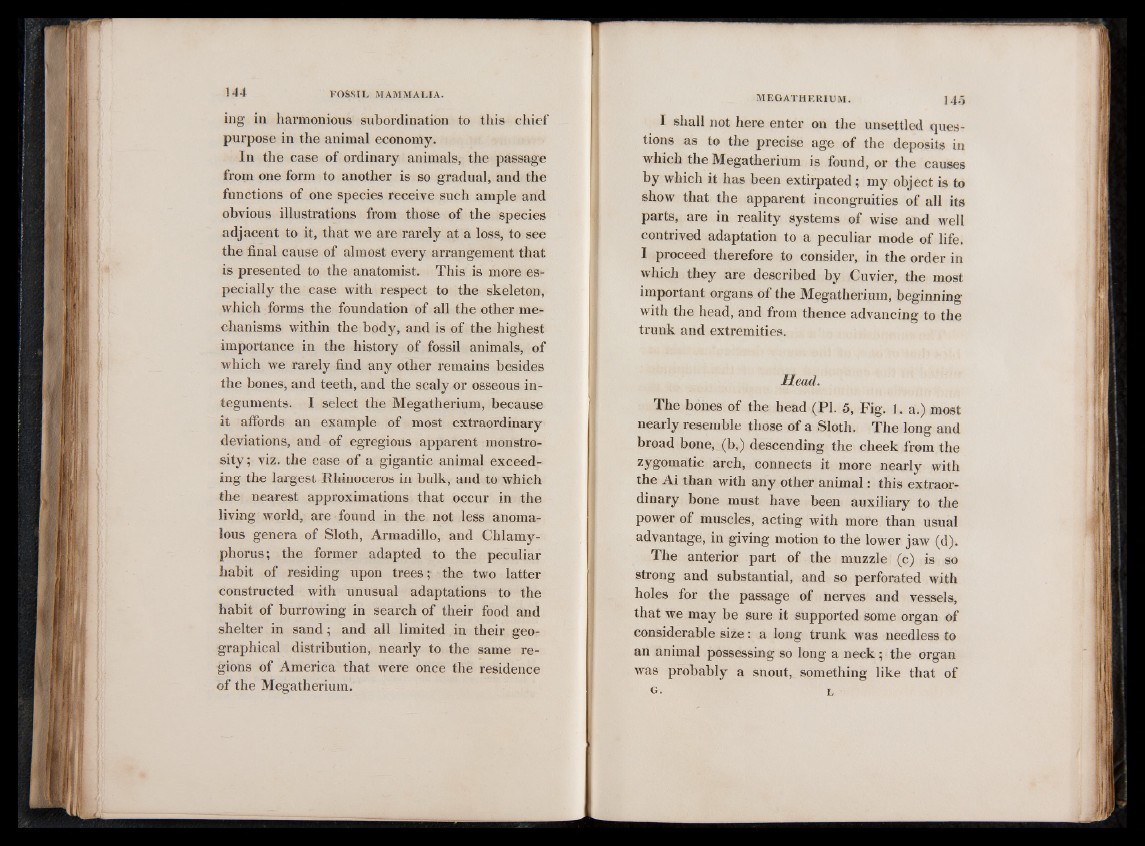
ing in harmonious subordination to this chief
purpose in the animal economy.
In the case of ordinary animals, the passage
from one form to another is so gradual, and the
functions of one species receive such ample and
obvious illustrations from those of the species
adjacent to it, that we are rarely at a loss, to see
the final cause of almost every arrangement that
is presented to the anatomist. This is more especially
the case with respect to the skeleton,
which forms the foundation of all the other mechanisms
within the body, and is of the highest
importance in the history of fossil animals, of
which we rarely find any other remains besides
the bones, and teeth, and the scaly or osseous integuments.
I select the Megatherium, because
it affords an example of most extraordinary
deviations, and of egregious apparent monstrosity;
viz. the case of a gigantic animal exceeding
the largest Rhinoceros in bulk, and to which
the nearest approximations that occur in the
living world, are found in the not less anomalous
genera of Sloth, Armadillo, and Chlamy-
phorus; the former adapted to the peculiar
habit of residing upon trees; the two latter
constructed with unusual adaptations to the
habit of burrowing in search of their food and
shelter in sand; and all limited in their geographical
distribution, nearly to the same regions
of America that were once the residence
of the Megatherium.
I shall not here enter on the unsettled questions
as to the precise age of the deposits in
which the Megatherium is found, or the causes
by which it has been extirpated; my object is to
show that the apparent incongruities of all its
parts, are in reality systems of wise and well
contrived adaptation to a peculiar mode of life.
I proceed therefore to consider, in the order in
which they are described by Cuvier, the most
important organs of the Megatherium, beginning
with the head, and from thence advancing to the
trunk and extremities.
Head.
The bones of the head (PI. 5 , Fig. 1 . a.) most
nearly resemble those of a Sloth. The long and
broad bone,_(b,) descending the cheek from the
zygomatic arch, connects it more nearly with
the Ai than with any other animal: this extraordinary
bone must have been auxiliary to the
power of muscles, acting with more than usual
advantage, in giving motion to the lower jaw (d).
The anterior part of the muzzle (c) is so
strong and substantial, and so perforated with
holes for the passage of nerves and vessels,
that we may be sure it supported some organ of
considerable size: a long trunk was needless to
an animal possessing so long a neck; the organ
was probably a snout, something like that of
G. L